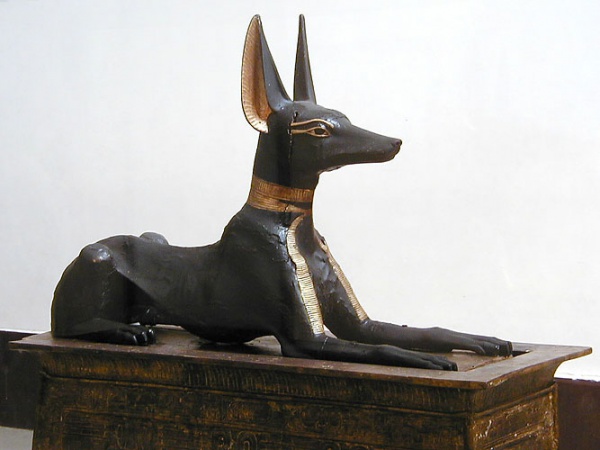Facts About Anubis Shrine
The Anubis Shrine was a significant burial artifact for the 18th Dynasty pharaoh Tutankhamun. Howard Carter discovered it nearly intact in 1922, within Tutankhamun's tomb in the Valley of the Kings, Thebes. Positioned just behind the entrance to the Treasury, the shrine featured a figure of the god Anubis facing west.
This Anubis statue, depicted as a reclining jackal, was crafted from wood, painted black, and adorned with intricate gold and silver details. It was wrapped in linen garments dating back to the reign of Pharaoh Akhenaten.
The shrine itself was trapezoidal, constructed of wood with a plaster coating and covered in gold leaf. It was decorated with symbols of endurance and life linked to Osiris, Isis, and Anubis. Inside, various cult objects and pieces of jewelry were found, although some had been disturbed by tomb robbers. The shrine was likely used during Tutankhamun's funerary procession and placed in front of the canopic chest in the Treasury.
The westward orientation of the shrine and Anubis statue symbolized the afterlife in Egyptian belief, underscoring Anubis's role as the guardian of the necropolis. A magic brick found at the Treasury entrance bore a protective inscription intended to safeguard the deceased, later contributing to the myth of the Curse of the Pharaohs, which gained popularity in the media.
The posture and form of the Anubis statue resembled a hieroglyph symbolizing Anubis, highlighting his role as a watcher and master of mysteries. The discovery and restoration of the Anubis Shrine have provided valuable insights into ancient Egyptian funerary practices and religious beliefs.

 Sudan
Sudan